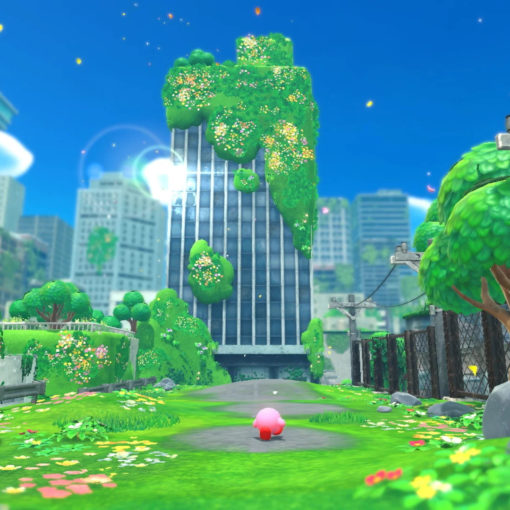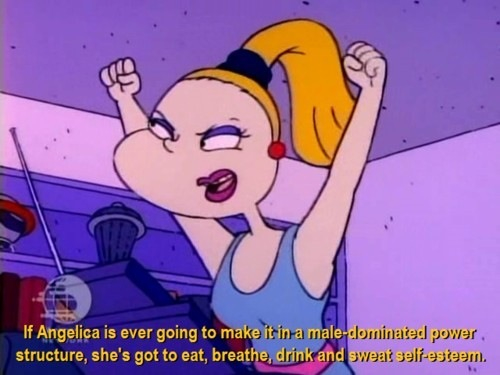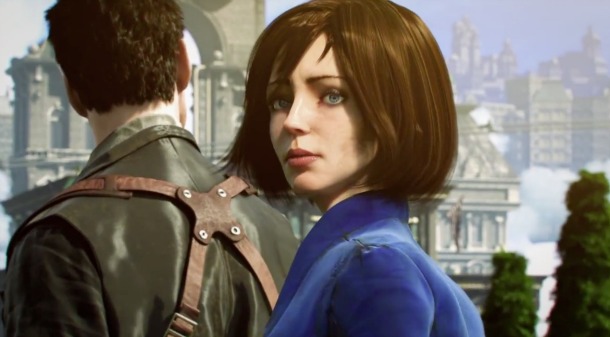There was a thoughtful response to my last post, Female Game Protagonists: Engendering Power Through Assemblages. I wanted to respond in the comment section, but it got a little out of control and just became another post. If you missed the last post, it was about using the idea of assemblages via Katie King and Donna Haraway and a few other theorists to think about female video game protagonists. By seeing them as assemblages, we are able to more clearly see them as complex characters not frozen in time or space or with a specific set of relations. Thus questions about what kind of female protagonist would finally make all us crazy feminists happy become essentially nonsense. Instead, we can create multiple possibilities with ethics always at the center. That is the cliff notes version at least.
I got some great questions from Terry Peterman, and I’ve broken them down and responded below. So Terry, thanks for you questions, and here are my responses.
In the previous article, I write, “If girls are more easily able to identify with Lara because she is shown as not having always been strong, it is far more problematic to force her to face multiple rape situations. We identify with her, and thus we face our own defilement along with her.”
Terry writes, “Can you explain what you mean when you say “We face our own defilement with her” in a bit more detail? I would like to hear a little more to help me tease out your conclusions in the text. Obviously, I understand that you are saying that women are forced to confront rape which results in what Jonathan Haidt would term questions of purity and thus your allusions to defilement, which could be problematic in a number of ways in and of itself, but I think you might be conceptualizing it in a way that is something more than that, and which I may not be getting.”
What I’m pulling from here is the notion that the more human a character is, the more likely you are to identify them and see pieces of yourself in them. In the Lara Croft example I used in the last post, Lara was made weaker, without the abilities and acrobatics she had in the previous iterations, in order to make her more likeable and make characters identify with her rather than see her as a superhuman abstract thing. In a a few different interviews, the designers and writers allude to this. The Creative Director said in one interview, “Lara will be much more confident and much more competent, but she won’t be the Lara exactly as you knew her in the previous Tomb Raiders, mainly because she will still be human. We will maintain humanity even in the face of her progression as a character.” All of a sudden Lara is human, and the whole story is designed for you to see her as human, and (I think) to get that little fantasy in the back of your mind that says, “I could be her.” Maybe it’s just me, but that is what happened when I played the game. In many parts throughout the story, I feel like I could also be killing deer for survival or starting fires or hiding from bandits. Literature and psychology calls it identification (obvs), but I think it’s even stronger in video games because you’re making choices for the character and, within the construct of the game, helping shape their story.
So to get back to the question. Because of everything I’ve laid out above, when Lara faced the rape situations in the game, the players who had identified with her faced them too. They were a part of Lara, or they possibly saw themselves as Lara (or at least I did). The creative director I talk about above says that in the previous versions of Tomb Raider, players didn’t identify with Lara. She was just an icon and a tool to play the game. A rape scenario there would have been problematic, sure, but I think it’s far more problematic to make a Lara we identify with and THEN make her face rape. IMHO, at least.
Also, I had a question about why it is problematic for a female character to be portrayed as a weak person who gains strength through the course of the game? I assume you mean because the strength gained is predicated on overcoming rape? Which we can all agree is extremely fucked up. However, I wanted to make sure you did not have some underlying larger point about the relative strength of female characters versus their male counterparts. For example, women characters are usually endowed with less powers from the beginning than their male counterparts which leads them to take longer to level up, accomplish goals, etc. Or that the leveling up is in someway feminized (i.e. overcoming rape) which leads to larger problems, as well. That is not to mention the larger issue of simply portraying women as less, right? That in and of itself would be a huge issue to tackle.
I personally liked the way Lara was weak and then became stronger, mostly for the reasons I outline above about being able to identify with her. Many, many people disagree with me however. Though, I think there are plenty examples of both male and female characters going through coming of age stories, either before or after their franchises get popular. There have been arguments made, by Sam and others, that Lara’s weakness has more to do with her being a female protagonist than with anything else. They made her wimper when she hits walls, cry, and she does struggle sometimes is doing what needs to be done.
None of those things, though, compare to the rape scenes. There is absolutely no reason they needed to include those (and they even claim to have toned them down!). As has been said, Master Chief never had to face being anally raped before he became a badass killer. And yes, it’s quite fucked up. Facing the rape doesn’t even have anything to do with level or some other game element. It’s simply there to make her more “human” or identifiable. As if it wasn’t enough to see Lara go through the rest of the game, she had to be seen as sexually vulnerable.
The issue of women being endowed with fewer powers, fewer clothes, and always being posed in submissive or sexual positions rather than strong ones is a different issue- though it is connected. Now, I’m not trying to argue there are no physical differences between men and women. However, as mentioned in the question, female characters are not just physically different in games. They often have fewer powers and are overall worse character choices.
In the end, Lara Croft is possibly one of the most complex characters we have seen in a video game. She means many different things to different people. And even though how she is presented in the most recent game (and previous versions) is problematic, she does force us to ask interesting questions about the larger roles of women in games. Again, thanks for the questions!




